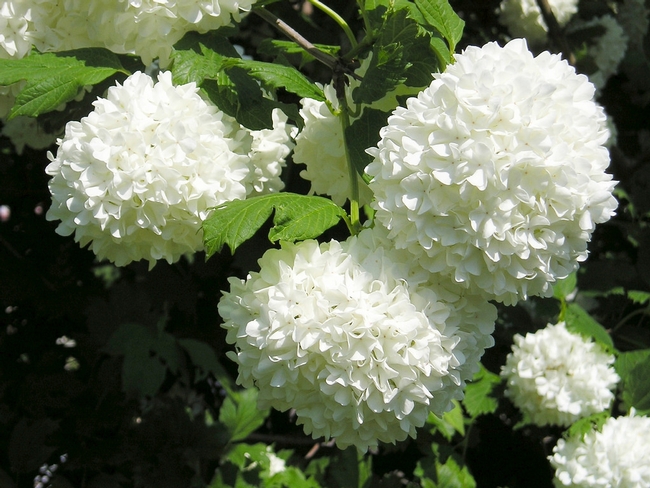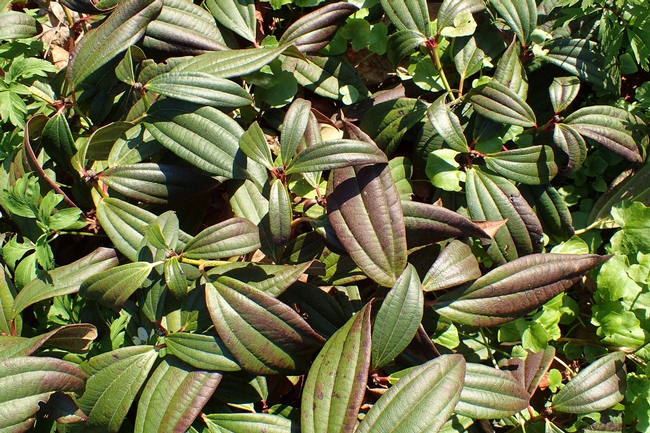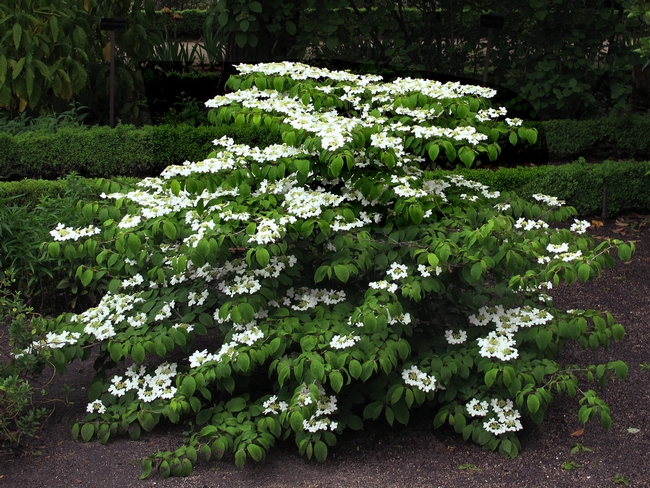By Jeanne Lawrence, UC Master Gardener of Butte County, June 29, 2018

The genus Viburnum comprises over 150 evergreen and deciduous shrubs and small trees, many of which do very well in our Butte County environment. In addition to providing structure and interest to the home garden, many viburnums are drought-tolerant and often provide fruits for birds to feed on. Some species produce highly fragrant flowers. And deciduous viburnum species can add lovely fall color to the garden before their leaves drop.
The following are just a few of the Viburnum species that do particularly well in our area.
Viburnum tinus (Laurustinus). This evergreen shrub is fast-growing in full sun or partial shade and creates a dense hedge of leathery oval, dark green, two-to-three-inch-long leaves. Allegedly only growing to 12 feet, examples have been spotted in Chico that easily reach 15 ft. or more. In early spring, tiny pink buds open up to clusters of white flowers that are long-lasting and fragrant; when the flowers finally drop, they are followed by equally long-lasting clusters of blue/black fruits that are loved by birds and may hang on until summer. V.tinus can be kept tidy by pruning, but if the possibility of a 15-foot hedge alarms you, dwarf and compact varieties are available.

Viburnum davidii. For a lower-growing shrub that provides nice structure in front of taller plants, V.davidii is a good choice. It is evergreen, with large oval leaves of up to six inches. It prefers partial shade, and, if happy, can produce clusters of brilliantly-colored metallic blue fruit.
Viburnum opulus ‘Sterile' (Common Snowball). Deciduous in colder climates, V.opulous is nearly evergreen here. A taller Viburnum, it can reach up to 15 feet, but is easily kept in bounds. Its leaves are lighter green and maple-shaped. In spring it has snowball-like flowers clusters about two-and-a-half inches across, which start out lime green and turn to white. The flowering stems make a spectacular display as cut flowers indoors. This Viburnum bears no fruit.

These are just a few of the interesting shrubs in this hard-working genus. If you have space for a new shrub, think about adding a viburnum to your garden.
For more information on gardening in our area, visit the Butte County Master Gardener web page at: http://ucanr.edu/sites/bcmg/. If you have a gardening question or problem, call our Hotline at (530) 538-7201 or visit ucanr.edu/p/49588.